How to Build Accurate Arrows
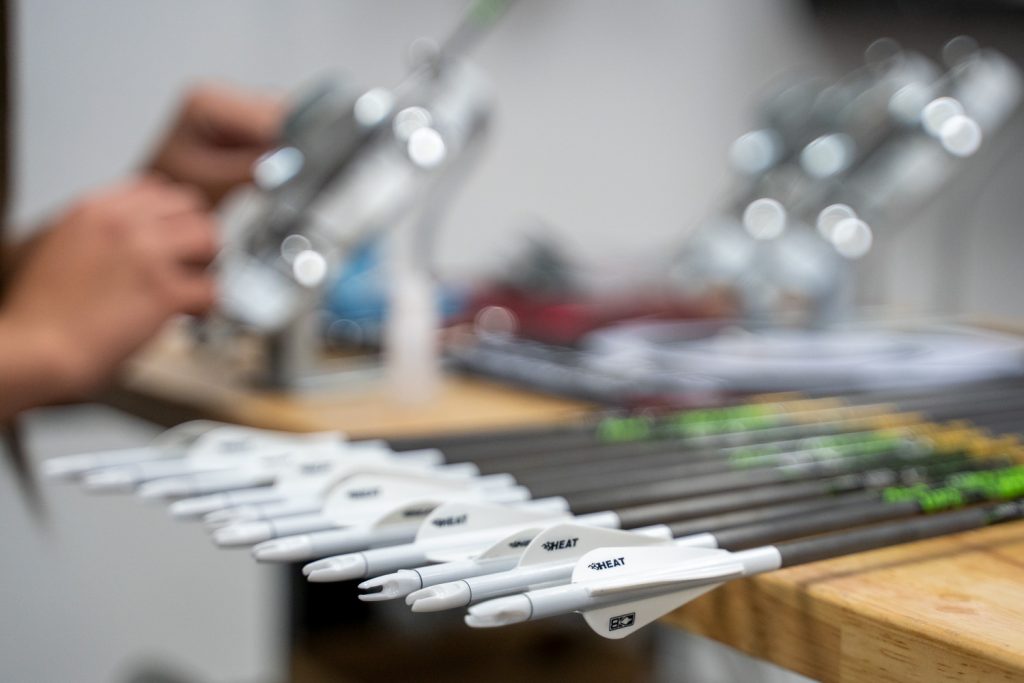
My twin brother Jeff and I build our own arrows and we are constantly tinkering with our setups to build the most accurate arrows. A few months back, Jeff wrote an article called "Arrow Setup 101". Arrow accuracy is built upon many of the fundamentals that Jeff discussed in his article. In addition to trying to build the most accurate arrow it is very important to understand that bow tuning is essential to complete this process. I won’t go into detail about bow tuning in this article, but even the most accurate arrow won’t have perfect flight without a well-tuned bow. Bow tuning is essentially creating an environment where the arrow leaves the string of your bow in its most efficient and natural form. What an arrow does after it leaves the string, is influenced by arrow accuracy.
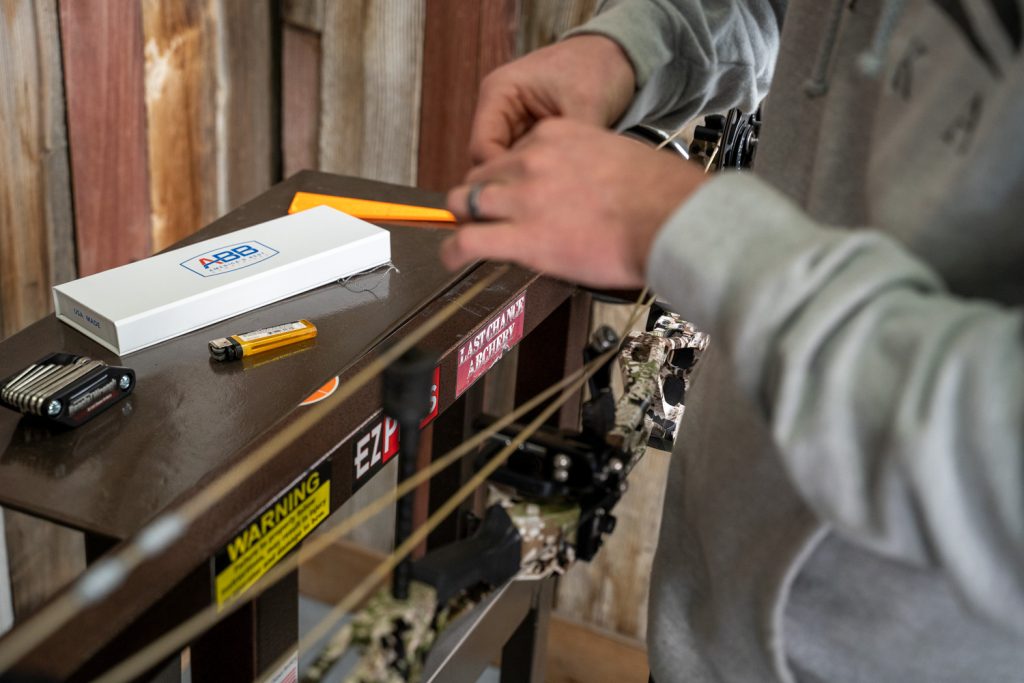
Factors that influence arrow accuracy
Straightness
The straightness of an arrow is most often talked about in tolerances. These tolerances are measured as a +/- to a thousandth of an inch of how straight the full length of an arrow is minus 2 inches. Without getting too technical, an arrow that measures +/- .001 is measured straighter than an arrow that measures +/- .003 or +/- .006. The straighter the arrow, the more expensive it typically will be. In my opinion, most bow hunters will not notice the difference in groups from an arrow that is +/-.001 vs +/- .003 in straightness. However, to give myself every edge on accuracy, I buy +/-.001 arrows for hunting and +/- .003 arrows for my practice arrows. Depending on your draw length, you can actually cut a couple inches off the end of a +/-.003 straightness arrow and it essentially becomes a +/-.001 straightness arrow.
Spine
The spine of an arrow is probably the most important part of the arrow shaft and often the most ignored. Spine is a measure of how stiff or how much flex the arrow has. For example, if you place a 29” arrow between two post 28 inches apart and hang a 1.94 pound weight in the middle of the shaft, the static (non-moving) spine of the arrow is the measure how far the arrow shaft drops down. When an arrow is launched out of a bow, the arrow flexes (dynamic spine) and eventually stabilizes. If the spine of the arrow is too weak, then the arrow has a hard time stabilizing and you will have poor arrow flight and erratic groups. If the spine of the arrow is too stiff, it is not as critical but can affect your groups as well. It is far better for the arrow spine to be too stiff than too weak. Spine consistency is also important from arrow to arrow to ensure each arrow is flexing the same when leaving your bow. So how do you pick the correct spined arrow? The spine of the arrow will be determined by the length of the arrow as well as draw weight. See chart below for guidelines on proper spine.
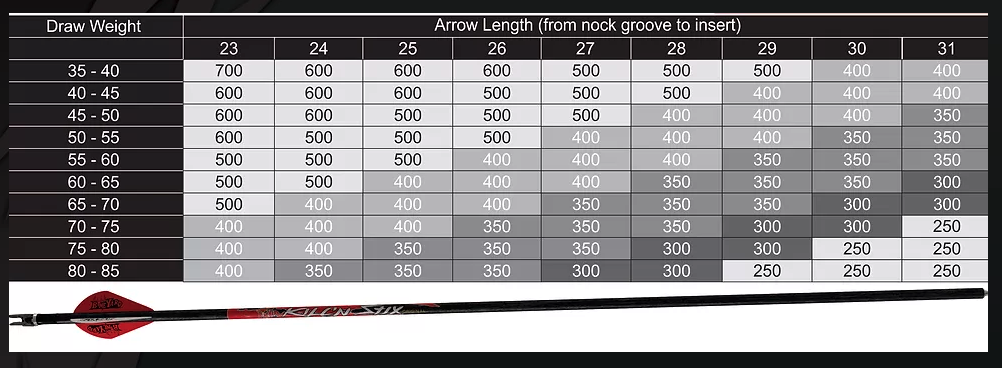
Note that adding weight to the front of your arrow via point weight will weaken the spine of the arrow. Conversely, adding weight to the back of the arrow will stiffen the spine. I shoot 70lbs of draw weight with a 27.25” length arrow. According to the chart above, I should shoot a 350 spined arrow; however, I like to shoot more weight on the front of the arrow to increase my front of Center (FOC). Because of this, I get better flight characteristics by shooting a 300 spined arrow. You will notice by watching the flight of your arrow if your arrow if flying “pure” or is kicking in a certain direction. If your arrow is not flying pure, then likely you are shooting an under spined or weak arrow.

Weight
Weight is the easiest category to measure as you can get a simple grain scale and determine how much your arrow weighs. Most if not all arrow manufactures will publish the weight of the arrow measured in grains per inch or GPI. When it comes to arrow accuracy, again consistency is key. Having your arrows all weigh the same or within a couple grains will give you the most accurate groups. The components you add to your arrow typically make the most difference in weight. For example, some broadheads can vary as much as 3-5 grains from one head to another. The amount of glue you use, vanes, points, and nocks all can have some inconsistencies which in turn can change the overall weight of your arrow. My goal is to have all my arrows within a couple grains of each other when completely built.
Shaft Diameter
The mainstream hunting arrow market is dominated by the 9/32” and 5/16” ICS style shafts. Typically, you will now see performance hunting shafts described in millimeters – much like firearm projectiles. These arrow diameter’s range from Standard (6.5MM) all the way down to Ultra-Micro Diameter (4MM) Without getting into too many pros and cons of each shaft diameter, the idea is that smaller diameter shafts will have less surface drag and therefore penetrate better and will also have less wind drag in flight. This creates more consistency and long-range accuracy. Having played with a lot of different arrow setups, I have noticed that the 4MM shaft tends to penetrate better and are less influenced by wind drift. The downside is that these arrows have less material and can be more susceptible to durability issues. I have gone back and forth over the years, but with the advances in technology I have found that shooting the 4MM Ultra Micro diameter shafts gives me the most accurate arrow and is on par with durability with most of the larger diameter arrows.
Fletching

Vanes come in many shapes, sizes, and materials. Their purpose is to steer your arrow once it leaves your bow. Remember that an arrow is oscillating when it comes off the string, so a vane plays a significant role in stabilizing the arrow. Determining the right fletching configuration for your set up can take some tinkering. I define fletching as how the vane is attached to the shaft of the arrow. You can affix a vane so it runs straight down the shaft or you can affix it with a right or left helical. A helical is the amount of twist the vane has when attached. More helical can help the arrow stabilize quicker but can also cause drag on the arrow. I personally shoot a very slight left helical on my setup. I also like to shoot the smallest, lightest vane I can and still have it stabilize my arrow. When shooting field points, you can get away with a fairly small vane but conversely it takes a larger vane to properly steer a fixed blade broadhead. I personally use a plastic vane that is 2 to 3” long and has a height profile of about .5”. This is plenty to steer a fixed blade broadhead. There is also a debate to be had about using 3 fletches vs 4 fletches. I have tried both but prefer the 3 fletch configuration because it allows me to have less weight on the back of my arrow which in turn gives me a higher percent of FOC. Three vanes also fit better on micro diameter shafts and is one less vane to create drag on my arrow.
Putting it all together
When I’m at a 3D event or just chatting with buddies about bow hunting, I frequently get asked “which arrow should I shoot?” My vague answer is usually “it depends.” As you can see from this article, there are many factors to consider when either buying or building an accurate arrow. Hopefully, now you better understand some of these factors and the lingo so you can start to talk the talk when buying or building your next hunting arrow. Remember that a great starting point is knowing your draw weight and draw length. Then using a spine chart, you can make sure you are shooting the right spined arrow. BlackOvis has a great tool called the Arrow ID Customizer. This program allows you to pick the Model, Size, Arrow Length, Fletching Size and Count, Color, Vane Angle, Nocks, Points, etc. It takes about a week for your arrow to be built and shipped to your door. This process will give you a more customized arrow setup and will be more accurate than just picking up a dozen arrows that are on sale at your local sporting goods store.
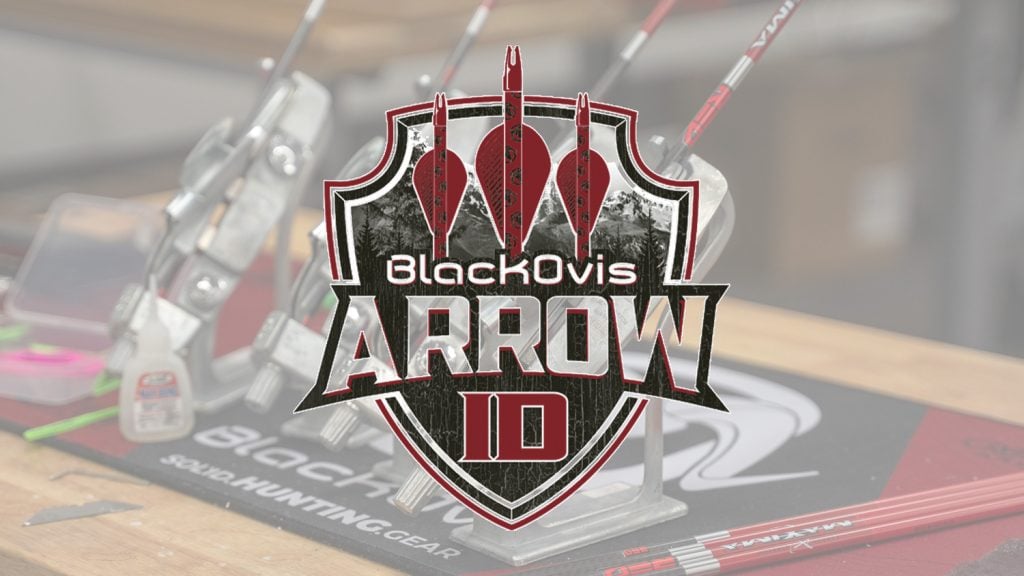
If you choose to buy bare shaft and build your own arrows, here are a few tips I practice that make my arrows more accurate.
- Use an arrow squaring tool
- Spine Indexing – mark the stiffest side of the arrow. – Some arrow manufactures have a spine aligned mark already on the arrow. This creates consistency on how you nock your arrow each time. Here is a good video explaining this. https://www.youtube.com/watch?v=h3NXPsmF2vU
- Make sure all components are installed so they are concentric to your arrow, meaning there is no wobble when you install a broadhead. I use slow set epoxy to attach my outserts so that I can test them on a spinning device to make sure they spin 100% true.
- Make sure your nock fits securely on the string but has a little movement between your nock points to avoid nock pinch at full draw.
- Mark your vane when an arrow is shooting good so you can nock it the same each time.
- Utilize an online software call Archers Advantage. This subscription-based software takes a lot of the guess work out of optimizing an arrow for your setup. You can also print sight tapes from this software. (https://www.archersadvantageonline.com/index.php?option=com_content&view=article&id=23&Itemid=2&logoff=1 )
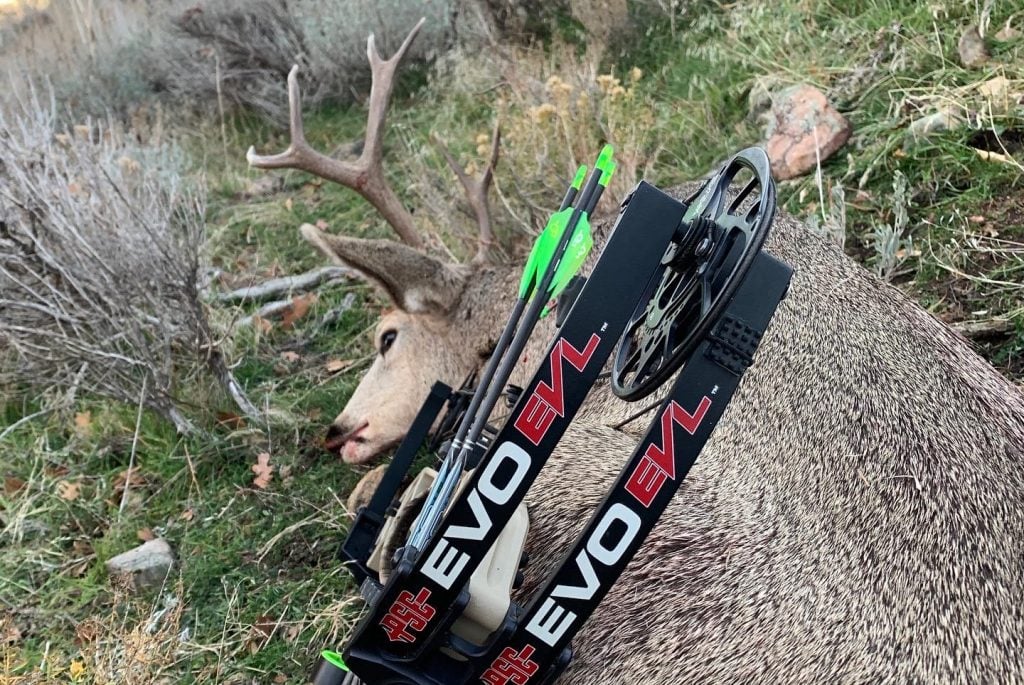
My Setup
Arrow: Killin Stix - Micro Ventilator LT
Arrow Diameter: 4MM
Arrow Spine: 300
Grains Per Inch: 8.14
Arrow Length: 27.25”
Point Weight: 150gr
Point Adapter: 55gr
Vanes: Q2i – Fusion II – 2.1” length – 7.5gr per fletch
# of vanes: 3 – slight left helical
Total arrow weight: 455gr
Front of Center (FOC) – 19.8%
I shoot this arrow out of a PSE EVL 34. Draw weight is 69lbs and Draw length is 28.5”.

Extra Credit
If you are thinking about an ultra-micro diameter arrow (4MM) then you will need to be aware of components that are available to fit this arrow. Whatever arrow you decide on, make sure that you are protecting the front end of the arrow. My outserts weigh 55 grains and cover the last 1.5” of my arrow making the weakest part of the arrow very strong and reinforced. These outserts also have very high tolerances meaning they fit over the end of the shaft perfectly. This is very important when it comes to overall accuracy and concentricity of the arrow with a broadhead.
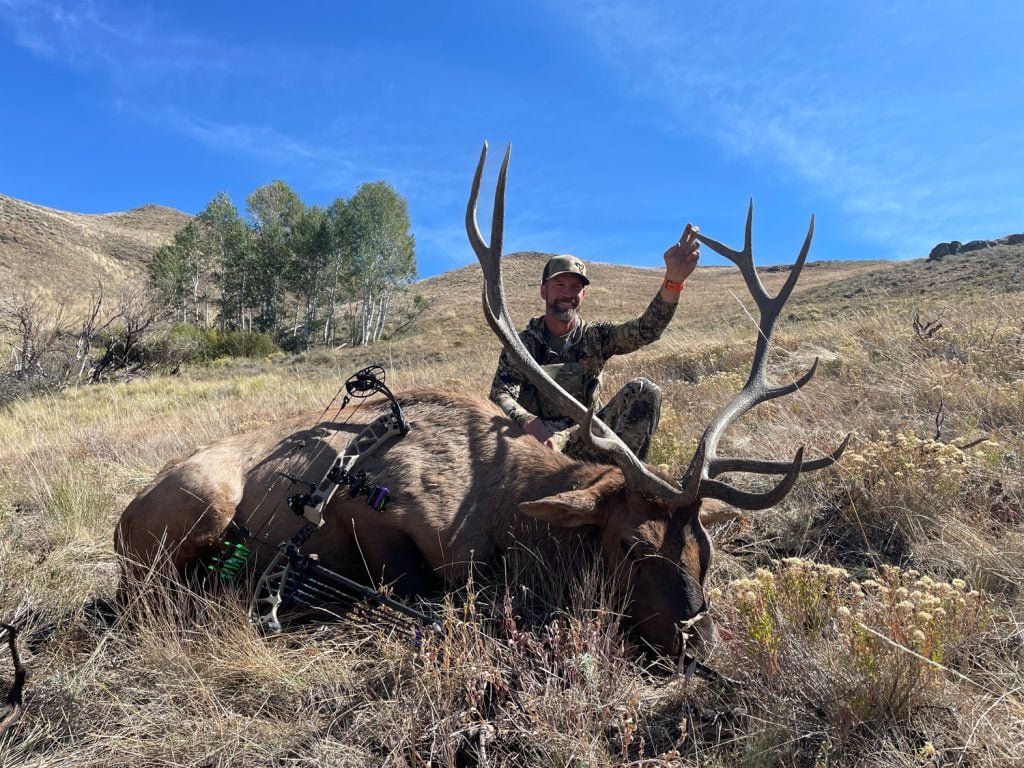
-Mark Skousen
